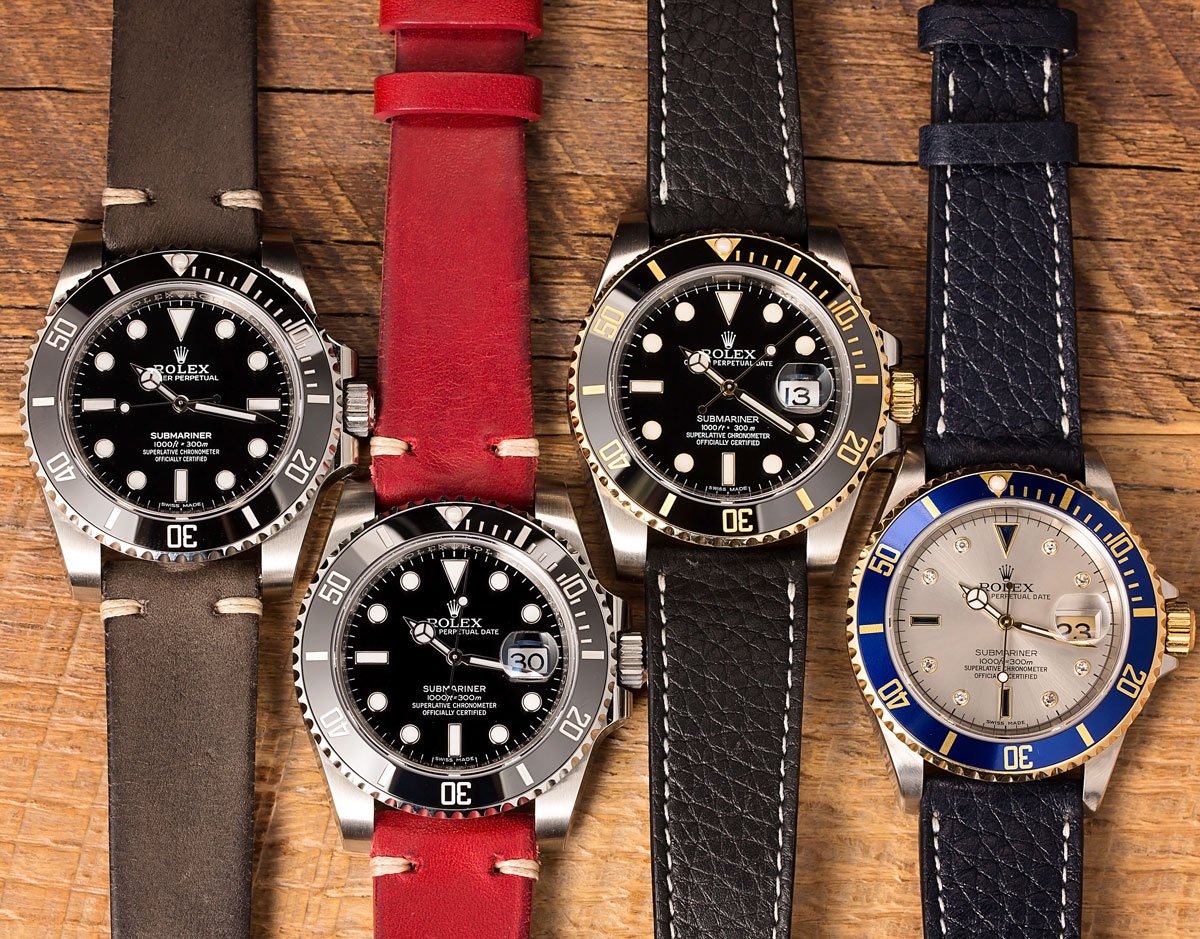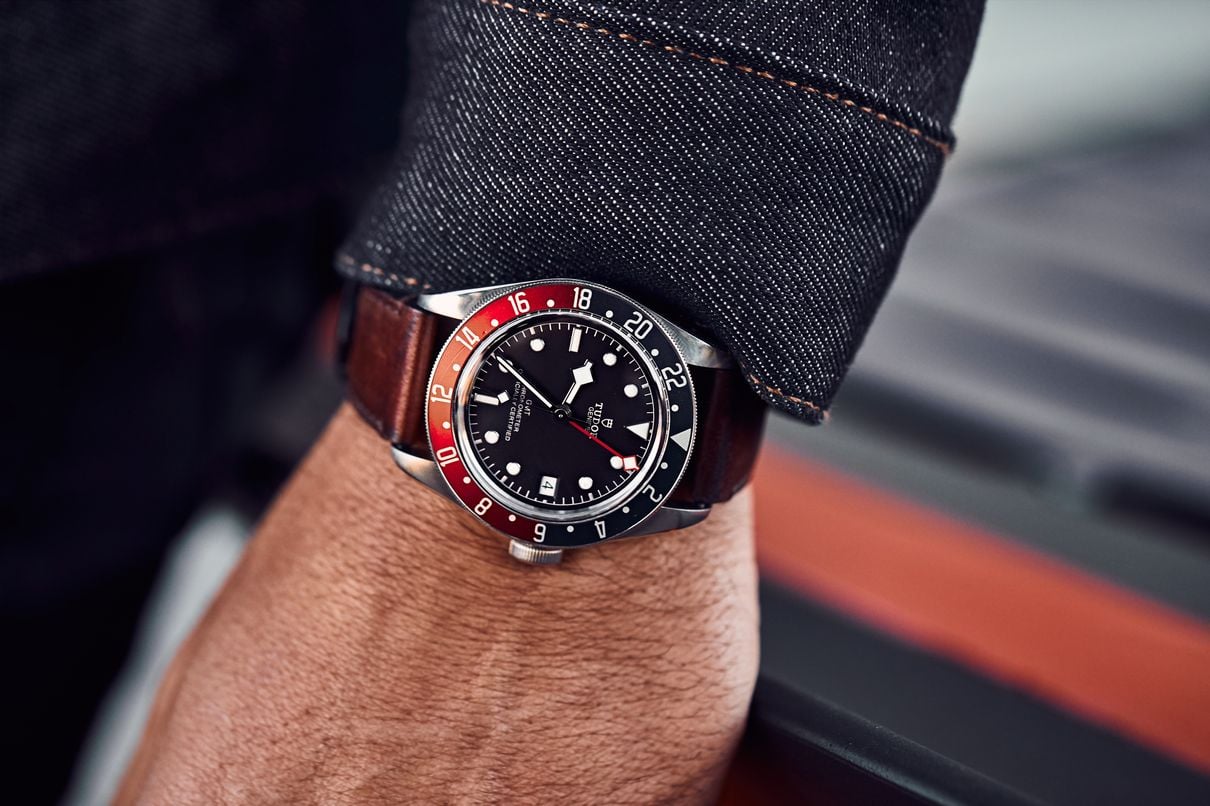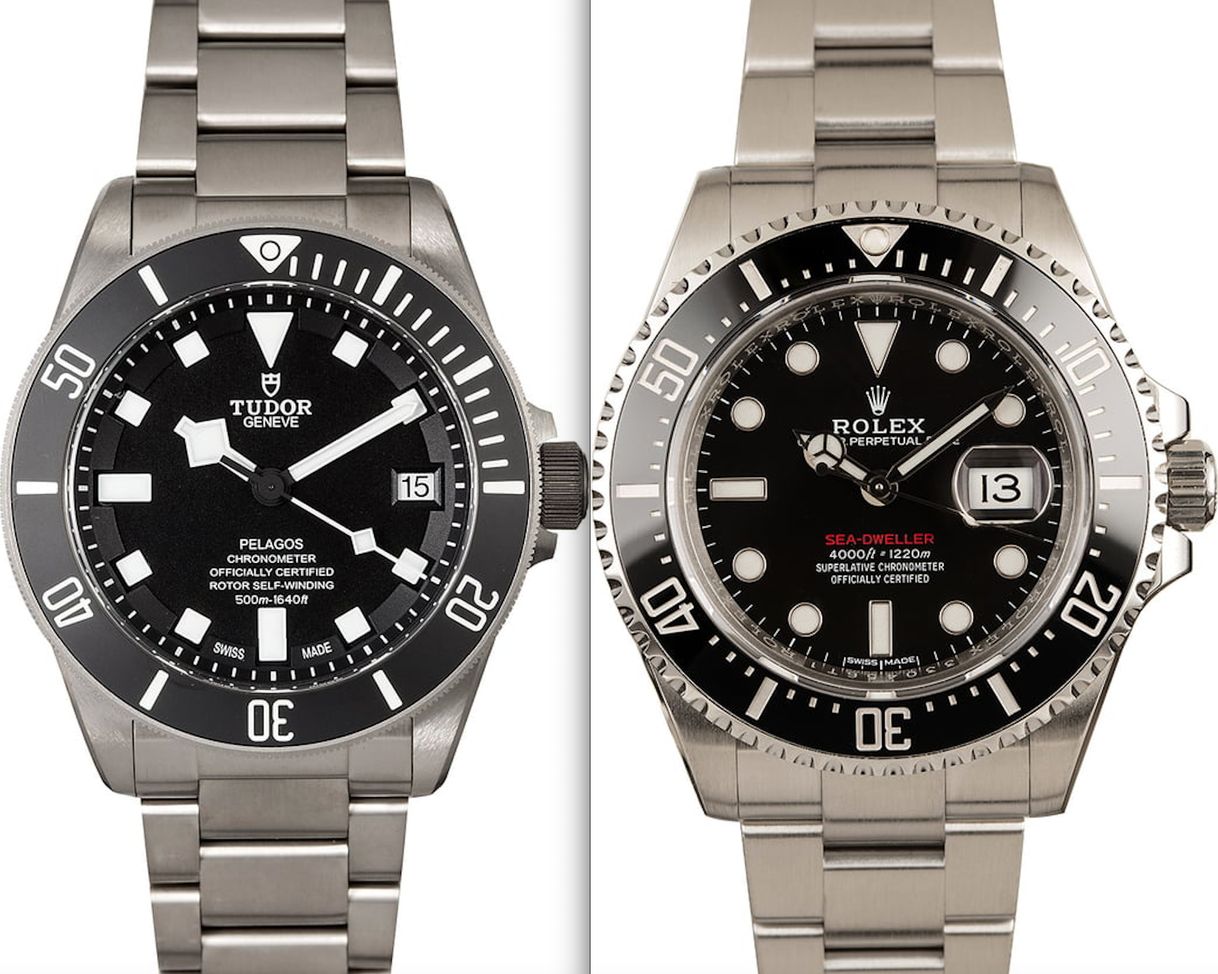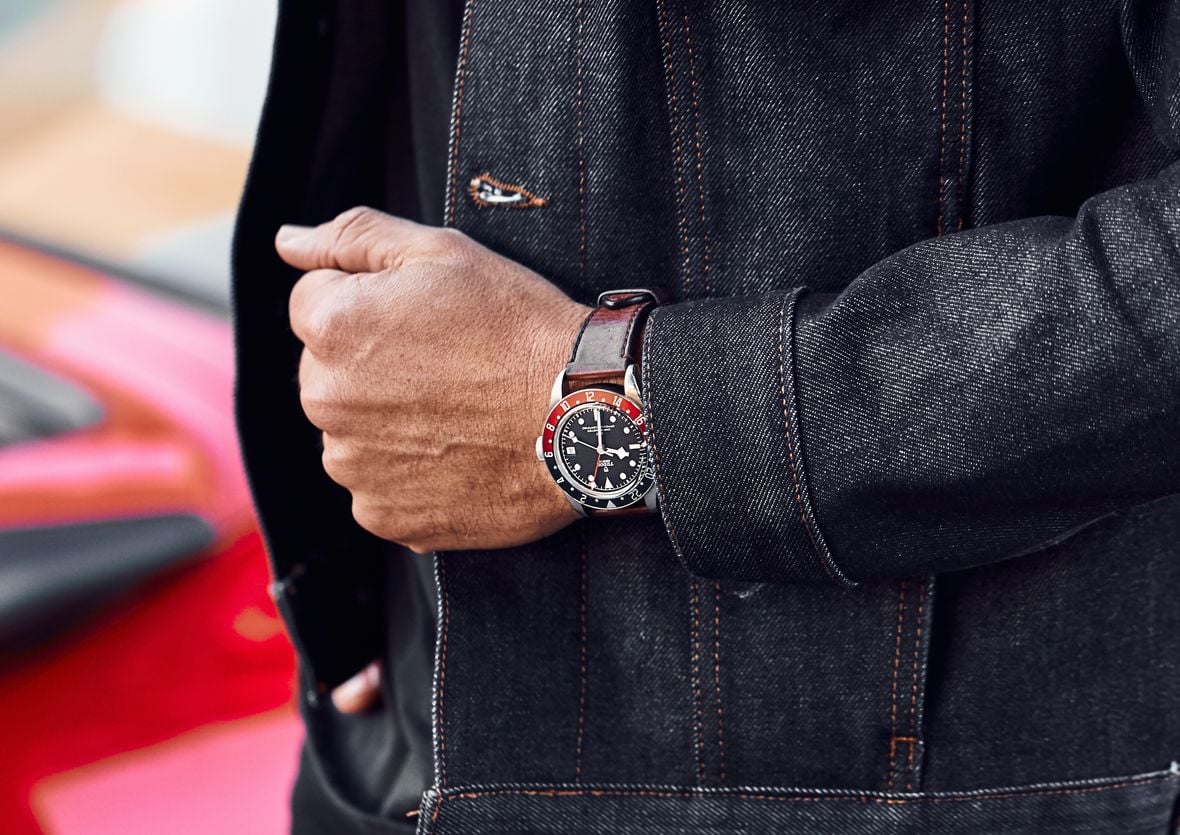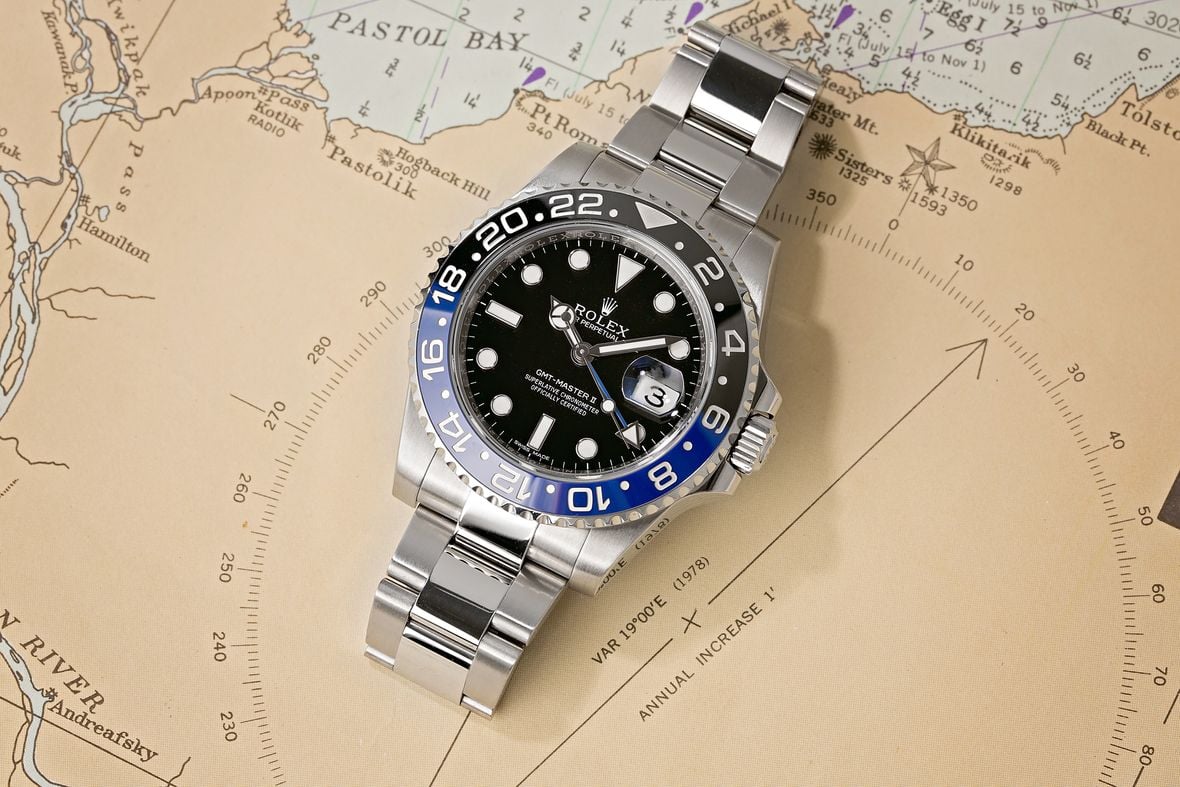You know a business has truly made it when its name becomes synonymous with the product it creates. In the same way that you immediately think ‘Kleenex’ when someone says tissue, if you were to ask anyone the first brand that comes to mind when you mention luxury watches, nine times out of ten, you will get ‘Rolex’ as an answer. But when you are a really long way out in front of your competitors, sometimes the name of one individual model also becomes interchangeable with its definition. For most people, ‘luxury dive watch’ is synonymous with the Rolex Submariner.
Now more than old enough to be drawing its pension, its design is the one which dictated what dive watches were supposed to look like—emulated, paid homage to and downright stolen by almost every other manufacturer out there. It counts some of the coolest figures of all time, both real and fictional, among its admirers, and is still one of the first stops in the journey of every burgeoning watch collector. There are a variety of reasons as to why the Rolex Submariner is the most popular dive watch of all time, and below we have laid out our top three.
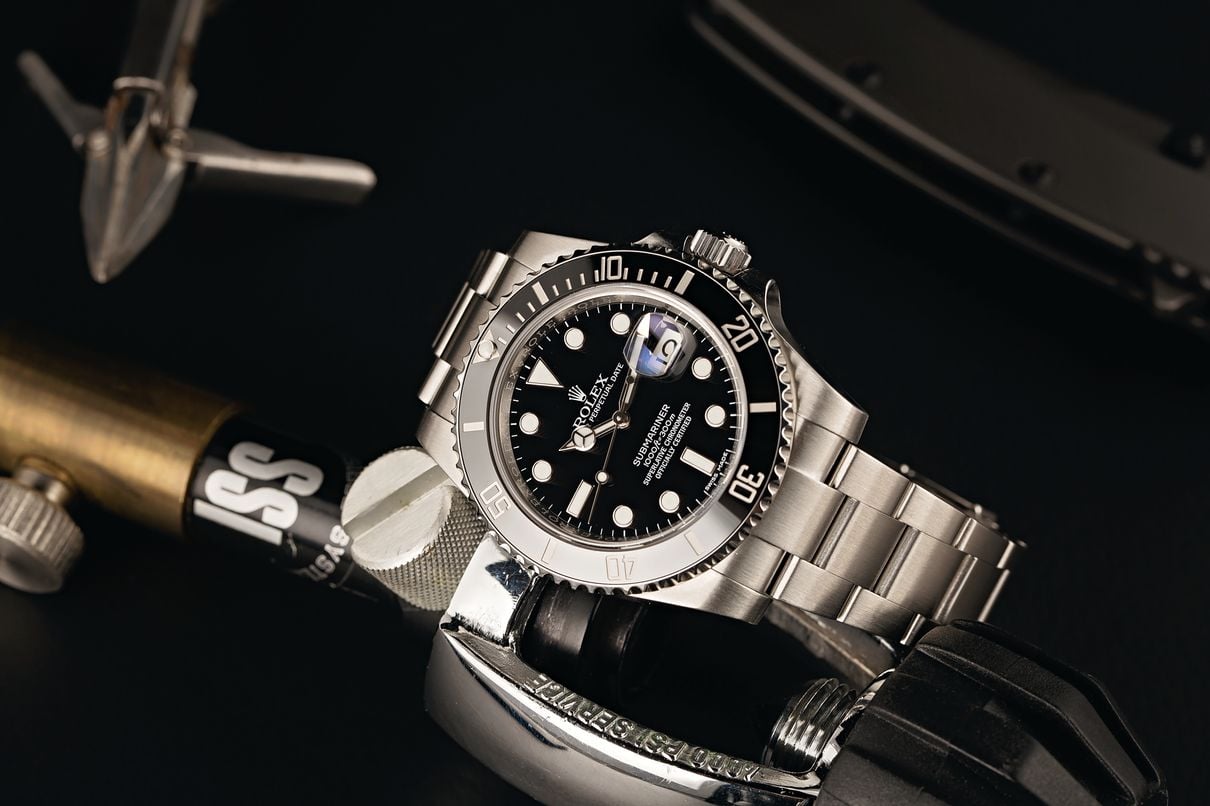
An Iconic Style
As universally admired as the Rolex name is, if their first attempt at a diver had been unsightly, the Submariner would have soon disappeared without a trace. Instead, what emerged in late 1953 was a model that managed to be as aesthetically pleasing as it was technically groundbreaking.
The Rolex Submariner was actually launched the same year as both the Explorer and the now-defunct Turn-O-Graph, the latter almost identical to the Submariner, even down to its black rotating timing bezel. As a trio, they set the standard for design that Rolex has followed ever since, as well as defining the then-new genre of tool watches.
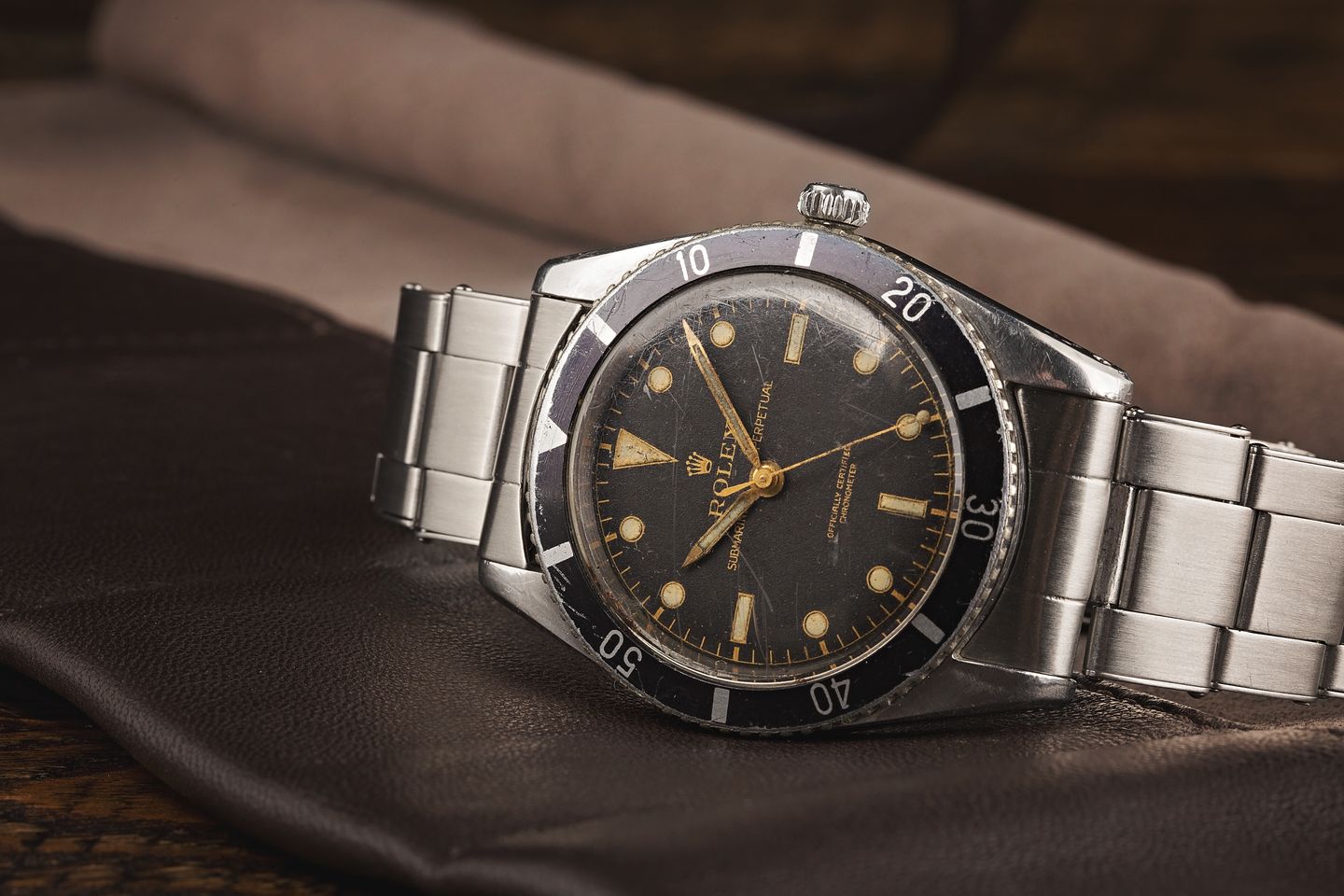
Even though the formative years for the Rolex Submariner were relatively turbulent, going through nine different references before the start of the sixties, the basics were settled early on, and have become the defining characteristics of the collection. Black dials with high contrast luminous hour markers provided excellent readability even at depth, while the hands were quickly upgraded to the well-known Mercedes style from the pencil type to further enhance legibility in low-light conditions
The bezel got its graduated markings along the first 15-minutes in the mid-1950s with the ref. 6538, which made tracking immersion time easier. Interestingly, the Rolex Submariner wouldn’t get a unidirectional bezel until as recently as 1983, after the patent held by Blancpain for their Fifty Fathoms had expired. Every Submariner before then had a bezel which turned both ways.
The only two major changes the Submariner went through happened with the introduction of crown guards on the ref. 5512 in 1959, and when Rolex introduced a date function in 1969 with the ref. 1680. After that, the series split into date and no-date models, with the no-dates sticking rigidly to their exclusively stainless steel construction, while the date pieces became available in gold and two-tone editions. The contemporary range of both has been beefed up with the brand’s Super Case, featuring lugs and crown guards that are almost twice the width of previous pieces. Despite the updated case proportions, the Rolex Submariner is still, on paper, a 40mm watch, as it has been for most of its life.

A Rich Heritage
As the first dive watch to reach the magic water resistance number of 100m, the Submariner was always likely to find an audience beyond the general public. While it was developed initially to capitalize on the new craze of Scuba diving during the 1950s, those who ventured into the depths for less recreational purposes were soon taking note.
In 1957, the British Ministry of Defence was on the hunt for a standard-issue timepiece for the Royal Navy, a search which soon brought them to Rolex’s door. They were furnished with 50 examples of the Big Crown ref. 6538, otherwise known as the ‘Bond Submariner’ (which we’ll get into later). After extensive and assumedly rigorous field testing, the MOD returned impressed and with just two additional requirements for the Rolex watches; a slight redesign of the bezel, which was proving difficult for their divers to turn while wearing gloves, and a more secure system for retaining the strap.
Rolex enlarged the bezel so it overhung the case, and gave it the serrated edge that we know today, as opposed to the original coin-edged style. Further, the springbars between the lugs were replaced with a solid bar welded in place, providing a far safer method for holding the one-piece nylon strap. This marked the start the Submariner’s relationship with the U.K. military, which lasted up until 1979, with only a brief switch to Omega’s Seamaster 300 for a couple of years in the late 60s.
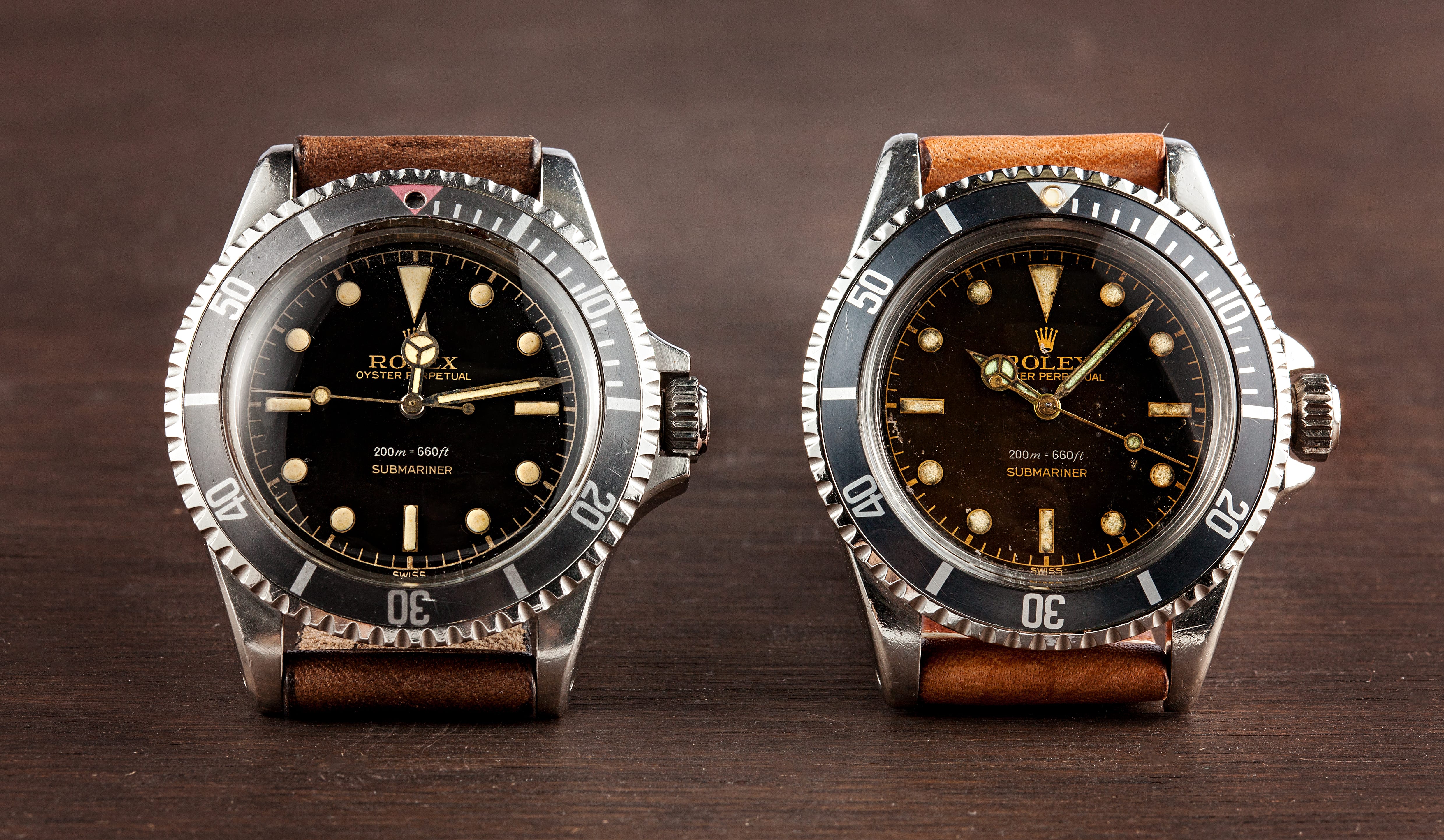
The ref. 6538 (rechristened the A/6538 with the MOD’s specs in place) along with those examples of the ref. 5512, ref. 5513, and ref. 5517 issued to the armed forces became collectively known as ‘MilSub’ watches. Today, these models are not only among the most fiercely sought-after grail watches for vintage collectors, but they are the ones which helped forge the Submariner’s masculine reputation.
Before long, the Rolex Submariner was the only choice for any man of action, civilian or not. Its status was also bolstered by some of Hollywood’s finest, with the likes of Robert Redford, Burt Lancaster, and perhaps most of all – the King of Cool, Steve McQueen all being devoted wearers. However, as far as celebrity testimonials, a certain big-screen super spy provided an image boost like no other.
The Rolex Submariner was the original James Bond watch and was featured in a number of films, including the very first (Dr. No) where Sean Connery strapped a ref. 6538 to his wrist and forever cemented the watch’s “Bond Submariner” nickname. Any man who tells you that he has never wanted to be James Bond is lying, and his choice in everything from clothes to cars to watches has helped define a generation. Arguably More than anything else, it was 007 who put the Rolex Submariner on the map.
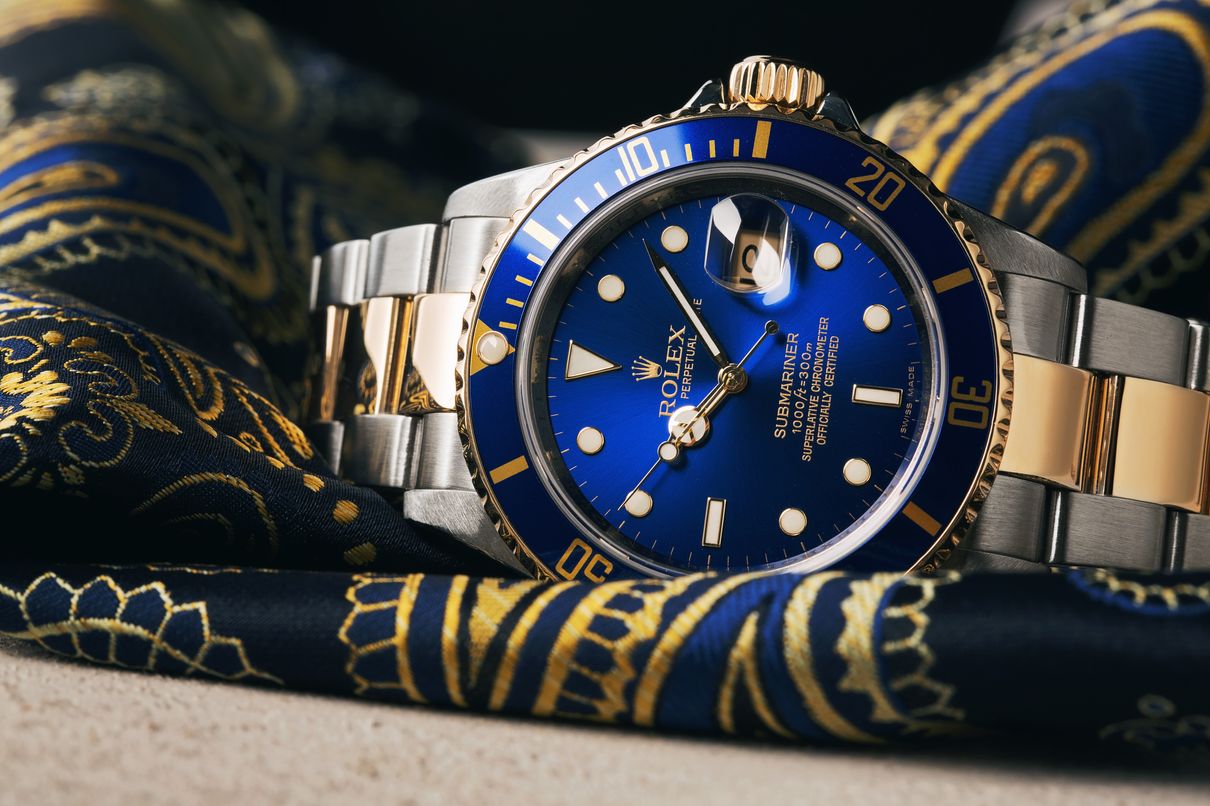
Many Rolex Submariner Options
There are two main versions of the Submariner; the date and no-date; however, the collection goes a bit deeper than that. The no-date versions have kept, as much as possible, to the tool watch ethos of the original reference. It has always followed the same format, available only in stainless steel and with a black dial and black bezel being the only option.
When Rolex introduced the date function to the Submariner in the late 60s, it marked a point of departure for many people: the moment the Sub stopped being a purpose-built dive watch and started becoming an international status symbol. Many maintained that there was no practical point to keeping track of the date while underwater and that the addition of a date display only detracted from overall legibility.
Rather than fight against it, Rolex embraced the more luxury-oriented role and began releasing the date-equipped Submariner in yellow gold, with blue dials and bezels becoming an option for the first time. Then, the Serti dials emerged, with diamonds and sapphires for their hour markers. Rolesor (two-tone steel and gold) editions followed in the 1980s; and then, on the 50th anniversary of the Submariner in 2003, the ref. 16610LV (nicknamed the ‘Kermit’) made its debut, featuring a bright green bezel. With the success of that model, the Hulk (ref. 116610LV) came along in 2010, complete with a matching green dial. Then the Smurf (ref. 116619), all in blue and with a solid 18k white gold case.
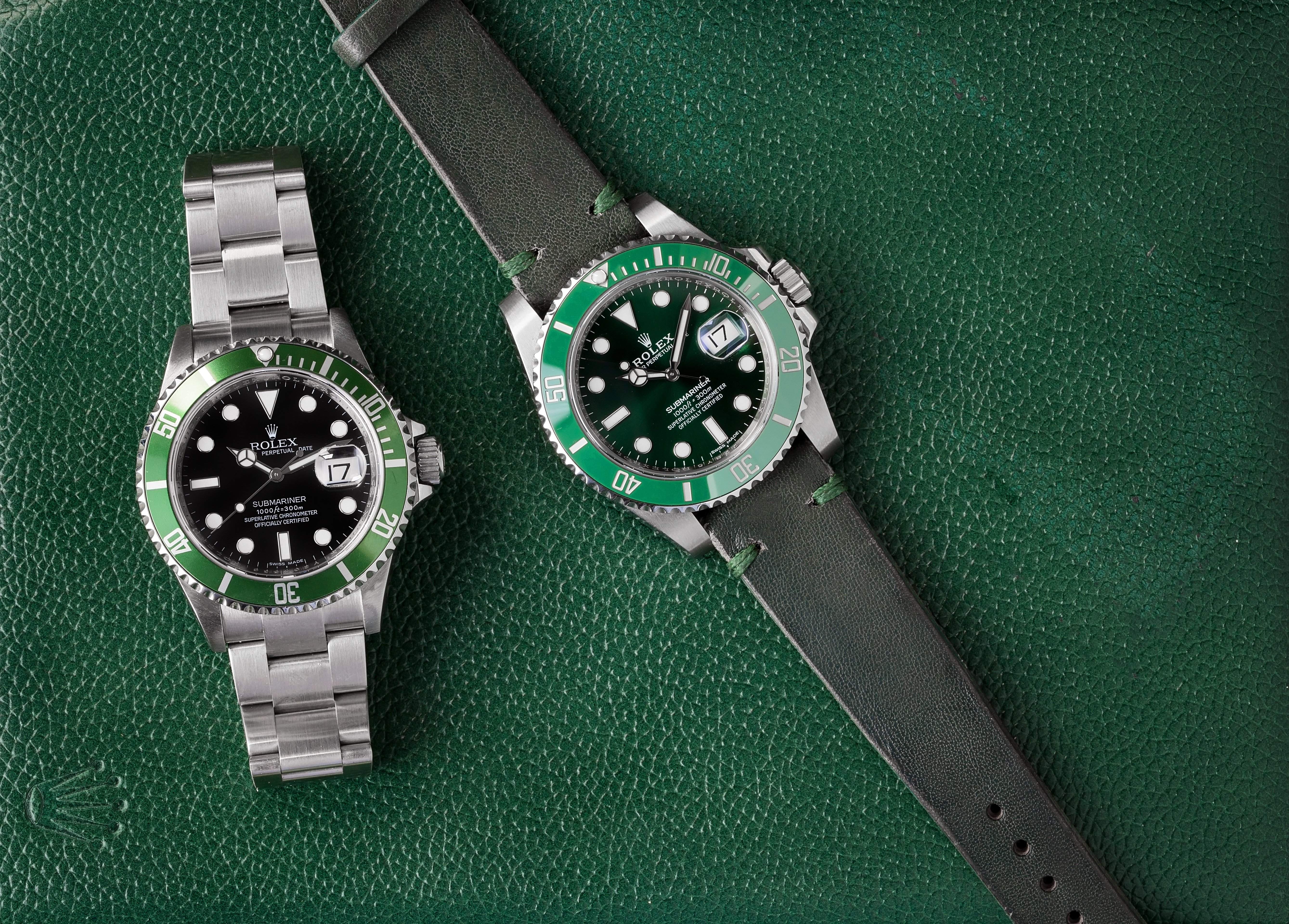
Today, the Rolex Submariner Date has seven variations in the lineup, while the No-Date version has just one. Despite their differences, they all share the same level of engineering prowess and have all passed the same brutal waterproof testing necessary to classify as a Rolex dive watch.
Would you be comfortable taking a $40,000 Smurf on your next wreck dive? Probably not, but it is still an extraordinarily well-built piece, and is more than strong enough to survive the day-to-day (or actual scuba diving) and look good doing it. In truth, I suspect very few Rolex Submariner watches (of any kind) actually find themselves in the ocean all that often; however it doesn’t really matter. Regardless of whether it is used for its initial intended purpose or not, the Rolex Submariner has a legacy unmatched by anything else. It is an absolute icon of horology and without a doubt, the most popular dive watch of all time.
